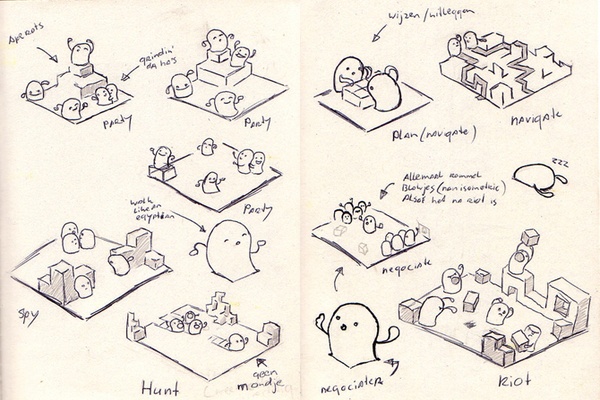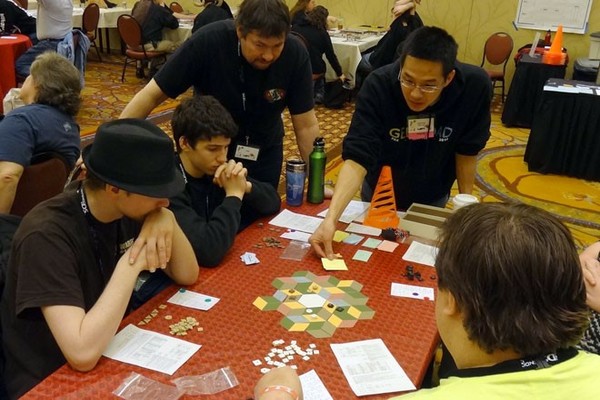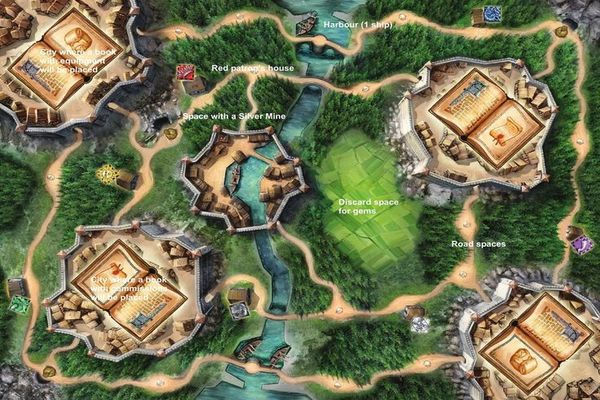Whether you played Candy Land or Risk, you probably had a lot of fun (and maybe some fights) playing board games, iconic staples of every happy childhood. Some of these board games are fleshed out with tons of cool things to do, while others are as simplistic as rolling a die and moving your piece. I compiled my top six tips for making your very own board game.
#1 Minimum Viable Product
One of the most crucial parts when making any kind of game, is making sure the base product of that game is interesting to play. If your base product does't attract an audience or satisfy player needs in a game, then you will have to scrap that idea and start over with a new, innovative idea.

Make sure your base design is balanced. A balanced game has a clear set of rules that prevent any component of the game from interfering with play or being seen as unnecessary or undesirable. If your base design is flawed in balance, then players will lose interest or get frustrated quickly. Once you accomplish balance, you will be able to take the next step in creating your board game.
#2 Scope
Make sure the scope of your game is checked and controlled constantly. As a game designer, one thing I struggle with is controlling the scope. An easy way of preventing your board game from getting out of hand is setting some parameters and end goals for certain issues at the beginning of your design planning. Let's say you need to balance a part of your game that needs revising, first make sure you solve all other balancing issues before you come up with a solution to solve this problem. 
You also want to make sure your game has some kind of unique objective that separates it from other games.No one will play a clone of a game with no unique twist. Making sure you polish this idea from the start though is one of the main things you should focus on when making your board game. Once you have a sound idea with all of your rules set, make sure you just focus on balancing your game.
#3 Prototyping
Once your game is fleshed out, you can finally create temporary game pieces and a placeholder for a board to begin play-testing. You want to make sure that you don't waste too many resources when it comes to prototyping, so you don't need to make a placeholder for everything in your game. Be resourceful; it makes a huge difference!

Prototyping your game is essential when you are testing new rule sets or mechanics in your game. Imagine trying to create new assets for a game, then you find out something is unbalanced and have to scrap all the art assets that you created for that portion. Making sure your game's rules are set is crucial. Prototyping your board and pieces will help that process.
#4 Playtesting
One of the most important parts of board game design is making sure that your idea works physically, and not just on paper. Everything may seem balanced and fleshed out on paper, but in person, it might be a game-breaking advantage. Make sure you play test after every little change, just to make sure a buff to a unit or an advantage to a player is checked before set in stone.

Finding this balance is crucial when it comes to games, so make sure you have a team of game developers or a target audience to play your game. Feedback game mechanics is invaluable!
#5 Art Assets
Once you finish your game and it's ready to play, you can call it quits! Just kidding. Now you have to finish one of the most arduous parts of the game: creating the art assets. Your game rules may be complete, and the game may be a blast to play, but if it's not pretty and polished, then no one will want to play it. You will need to entice a player with a couple of creative assets.

First off, you need a theme for your game. Make sure it fits the gameplay. All of your assets should be geared toward this theme. In terms of actually creating the assets themselves, make sure you have enough time to create all of them. Find game shops that specialize in printing boards and pieces.
#6 Wrapping up
Congratulations, you have completed your very own board game! You can now choose one of three paths. The first path is just enjoying your game with friends. Many people do this as they don't believe their game is marketable enough to actually pitch and sell. Personally, I think most people who follow all the advice of this guide can take the second path, which is finding a distributor who is interested in producing your game in bulk.
If you choose the second path, then you need to prepare to market your game and share it with the world! Finally, the third path you can take is porting your game to a mobile device, but it requires extensive knowledge in coding languages. The mobile market is huge, and you can capitalize on its popularity to generate a profit. Now get out there and create the board game of your dreams!





Comment